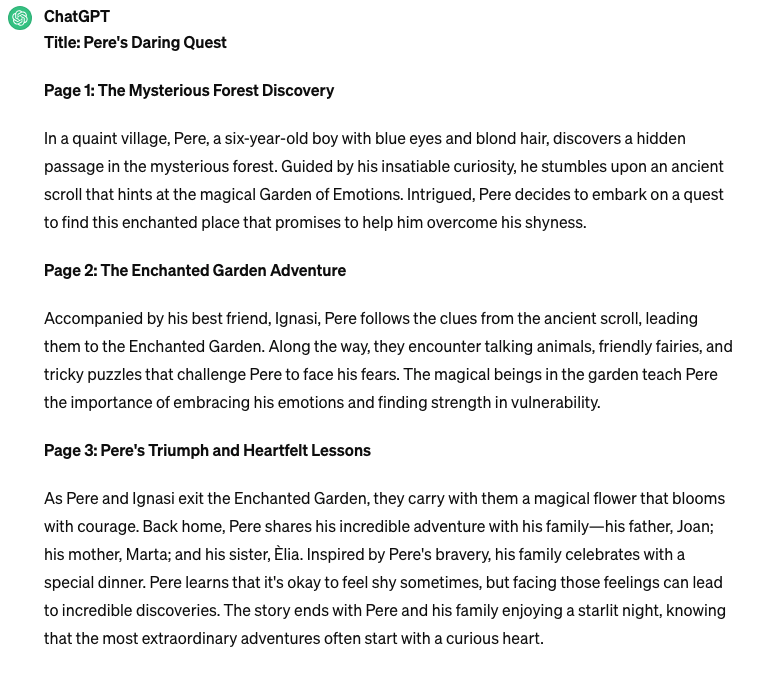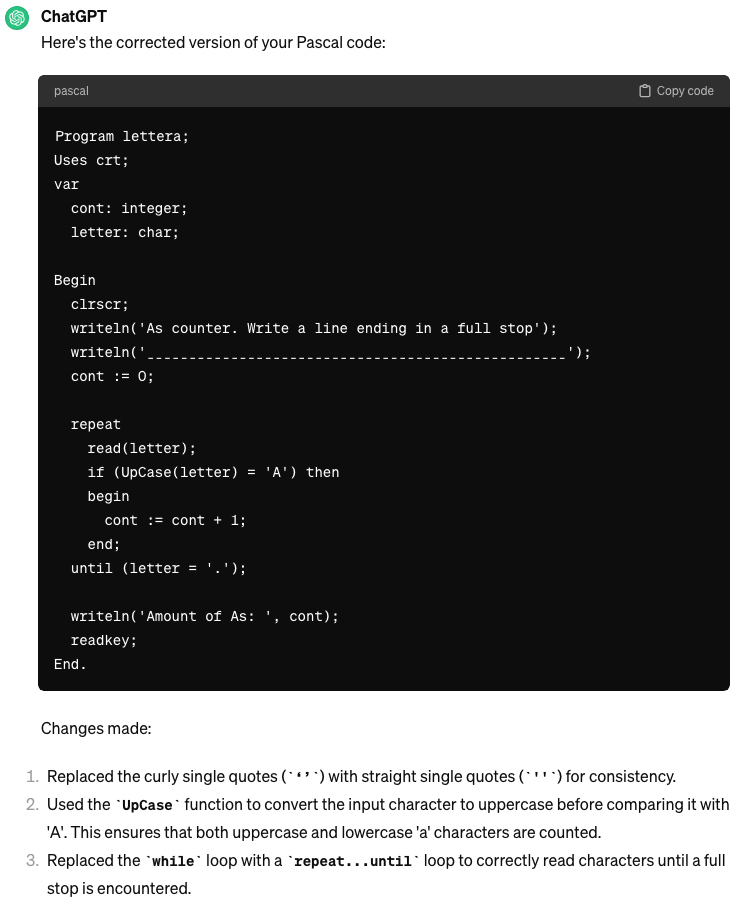3.4. Examples of prompts
Prompt: Create a story for a six-year-old boy to help him overcome shyness.
Output:

Prompt: Create a story for six-year-old children in the style of René Goscinny, creator of Asterix and Obelix. The hero’s name is Pere, a six-year-old boy with blue eyes and blond hair. The style of the story should be adventurous and exciting, based on the fantasy genre. In the story Pere learns how to manage emotions, as he is very shy. Some of the characters to include are his father, Joan; mother, Marta; his sister, Èlia, and Ignasi, his best friend. Pere enjoys reading and athletics. Start the story with an entertaining title and divide it so each part starts on a new page, leaving a space to add images.
Output:

Prompt: A ten-year-old boy with brown eyes and light brown hair. Sitting on the floor gazing at the stars through the window. In a watercolour style.
Output:

Prompt: A 25-year-old Catalan woman, in a yellow dress, studying at her desk with a blue picture stamped with the letters “UOC”. Foreground, natural light, cool wall colours, production quality, depth of field, professional and realistic photography, lots of detail, long exposure time, f/1.8, diffuse backlighting, studio lighting.
Output:

Prompt: Portrait of a pale Harry Potter, round dark eye circles, looking left with a solitary expression. He is in the dimly lit Hogwarts dining room with shady background figures moving away, creating a sense of isolation. The room has many floating ceiling lights and the different flags of Hogwarts’ schools. The scene has a grainy cinematic quality, reminiscent of a 35mm film and captures the mood of a dark night. The composition evokes a dark, introspective atmosphere.
Output:

Prompt: “In the following program made in PASCAL programming language that is intended to count the number of lowercase or uppercase characters in a sentence ended with a stop entered by the user, could you please indicate where the errors are?”
Program lettera;
Uses crt;
var cont:integer;
letter:char;
Begin clrscr;
writeln(‘As counter. Write a line ending in a full stop’); writeln(‘__________________________________________________’);
cont:=0;
read(letter);
while (letter<>‘.’) ;
begin if ((letter=‘a’) or (letter=‘A’)) then begin cont:=cont+1;
end; read(letter);
end;
write(‘Amount of As: ‘,cont); readkey;
end.Output:

The program should now correctly count the number of “a” characters (lowercase or uppercase) before the full stop marking the end of the entry.
Additional information can be found here:
Gómez Cardosa, D. and Garcia Brustenga, G. (2023). How to question AI. Useful prompts for teaching staff when using generative AI. https://openaccess.uoc.edu/bitstream/10609/147885/1/Manual%20IA_PROMTS_ENG.pdf